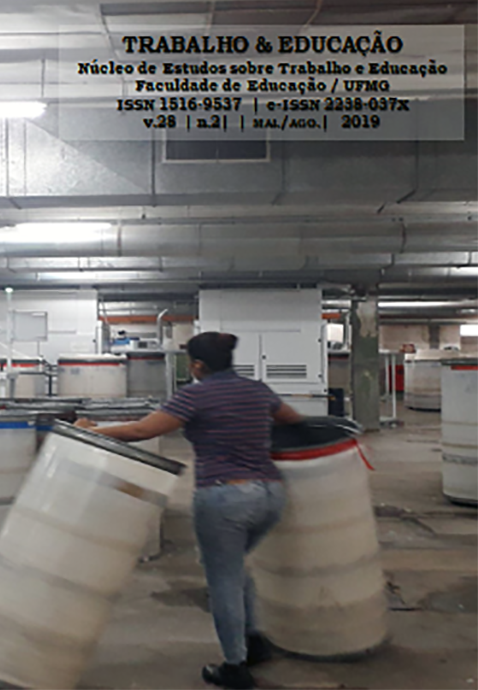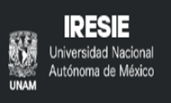The musician and his work in the new musical order of Belo Horizonte city
DOI:
https://doi.org/10.35699/2238-037X.2019.9572Keywords:
Work, Musician, Mercantile Circuit, Musical Order, Belo HorizonteAbstract
This article, is a result of the doctoral thesis "The relation of the musician to the work: when the musician's work changes from unproductive work to productive in Belo Horizonte", defended in 2018 at the Faculty of Education of UFMG, has the object of analysis musician and his work in the city Belo Horizonte. The objective is to present discussions that were dealt with in the research on the current processes of commercialization of the work of the musician in the city, starting from the analyzes about the relations of the musician and his work initially understood as a specific human activity in producing sound, for example, and, secondly, how it is incorporated in the mercantile circuit in the city of Belo Horizonte. In the thesis, what was verified was that the scenario of exploitation of the musician's workforce in capitalism metamorphoses itself, creating new nomenclatures as kind of "makeup" of the exploitation of the music worker. The capitalist reproduction in this sector can be observed under various facets, such as, for example, laws to encourage culture, designed as a way of guaranteeing the reproduction of the capital involved in this activity, transforming it into an economic model of artistic production in Brazil. The text also has the sense of elucidating what the work of the musician is, which is quite diverse and multiple in the city of Belo Horizonte, once this is a "musical city", since even before its founding there were already musicians (Martins, 2006). In the history of music in the city, in the last decade of the last century, social and artistic movements established a new musical order, and the best example was the rebirth of the street carnival that reveals the performance of this musician in the new musical order of the city and in the commercial circuit as a worker
Downloads
References
ADORNO, T. W. et al. Teoria da cultura de massa. São Paulo: Paz e Terra, 2000.
ADORNO, T. W.; HORKHEIMER, M. Dialética do esclarecimento: fragmentos filosóficos. Rio de Janeiro: Jorge Zahar, 1985.
ANTUNES, R. A dialética do trabalho: escritos de Marx e Engels. São Paulo: Expressão Popular, 2004.
BENJAMIM, Walter. Magia e técnica, arte e política: ensaios sobre literatura e história da cultura. Editora Brasiliense Ltda. São Paulo 2012. p. 180.
BOSI, E. O tempo vivo da memória: ensaios de psicologia social. São Paulo: Ateliê Editorial, 2003.
CUNHA, D. M. Aspectos da estrutura e do funcionamento da atividade humana em Aléxis Leontiev. In: ARANHA, A.; CUNHA, D.; LAUDARES, J (Orgs.). Diálogos sobre o trabalho: perspectivas multidisciplinares. Campinas: Papirus, 2005.
ELIAS, Norbert. A sociologia de Mozart. Belo Horizonte: Autêntica, 2007.
FREIRE, Paulo. Educação e mudança. Rio de Janeiro: Paz e Terra, 2007.
FERREIRA, Pedro. Disponível em: https://www.em.com.br/app/noticia/gerais/2016/03/01/interna_gerais,739131/carnaval-2016-gerou-renda-de-r-54-7-milhoes-para-bh-e-publico-aumento.shtml. Acesso em: 03 set. 2019.
FUNDAÇÃO JOÃO PINHEIRO. Centro de Estudos de Políticas Públicas. Diagnóstico da cadeia produtiva da economia da música em Belo Horizonte. Belo Horizonte: FJP, 2010. 185p.
GRAMSCI, A. Hegemonia e cultura. Curitiba: UFPR, 2007.
JULIÃO, L. Sensibilidades e representações urbanas na transferência da Capital de Minas Gerais. História, São Paulo, v. 30, n. 1, p. 114-147, jan./jun. 2011. Disponível em: http://www.scielo.br/pdf/his/v30n1/v30n1a06.pdf. Acesso em: 03 ago. 2017.
LEÃO, Andréa Borges. Nobert Elias & a educação. Belo Horizonte; Autêntica, 2007.
MAUAD, A. M. Fontes de memória e o conceito de escrita videográfica: o propósito da fatura do texto videográfico Milton Guran em três tempos. Oralidades: Revista de História Oral, São Paulo, v. 13, n 1, p. 141-151, jan-jun. 2010.
MARX, K.; ENGELS, F. Sobre Literatura e arte. São Paulo: Global, 1986.
MARTINS, L. M. A orilatura da memória. In: FONSECA, M. N. S. (Org). Brasil afro-brasileiro. Belo Horizonte: Autêntica, 2006.
MENGER, P.-M. Retrato do artista enquanto trabalhador: metamorfose do capitalismo. Lisboa: Editora Roma, 2005.
MELLUCI, Albert. A invenção do presente. Petrópolis: Vozes, 2001.
NORA, P. Entre Memória e História: a problemática dos lugares. In: Projeto História. São Paulo: PUC, n. 10, pp. 07-28, dezembro de 1993.













